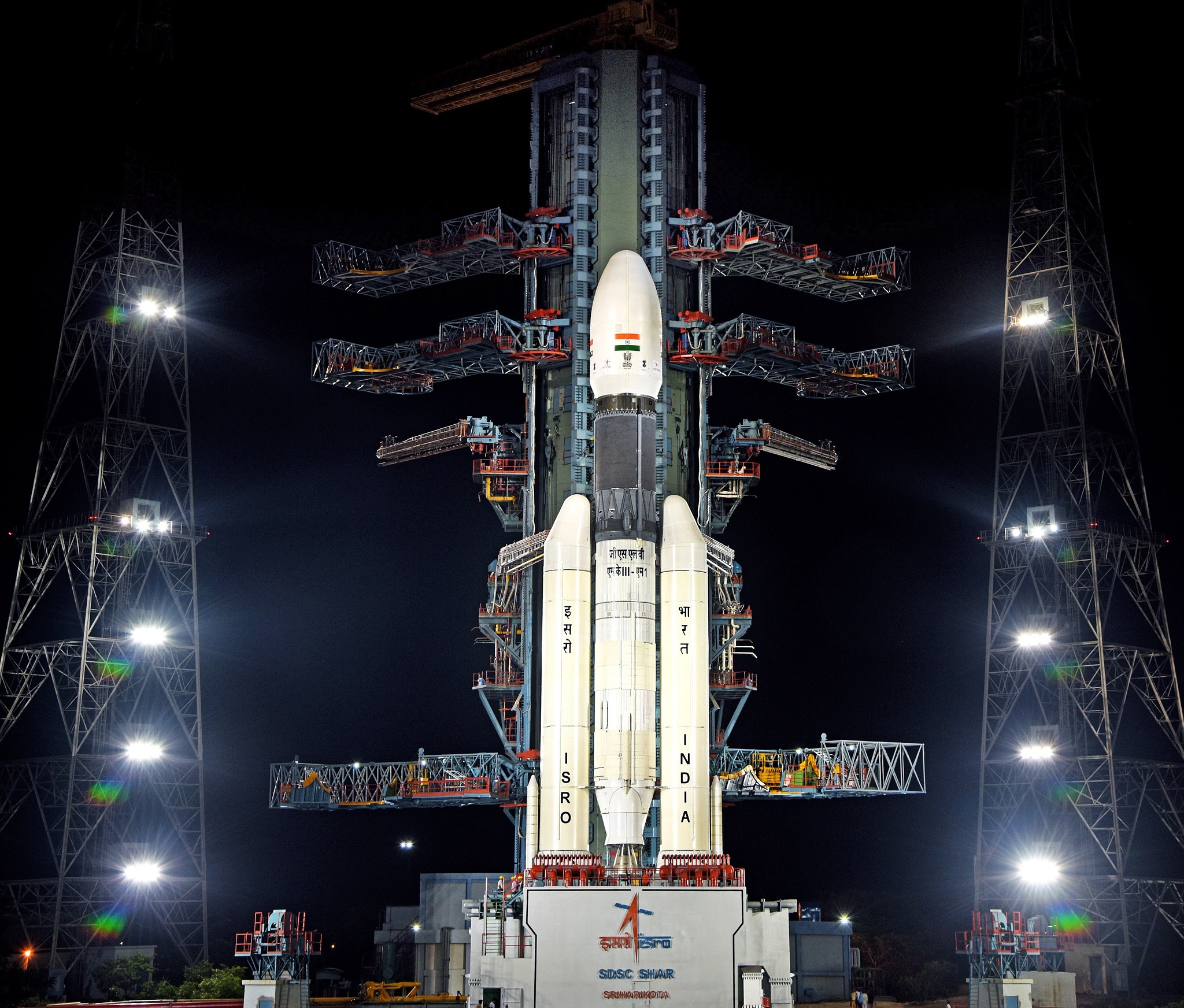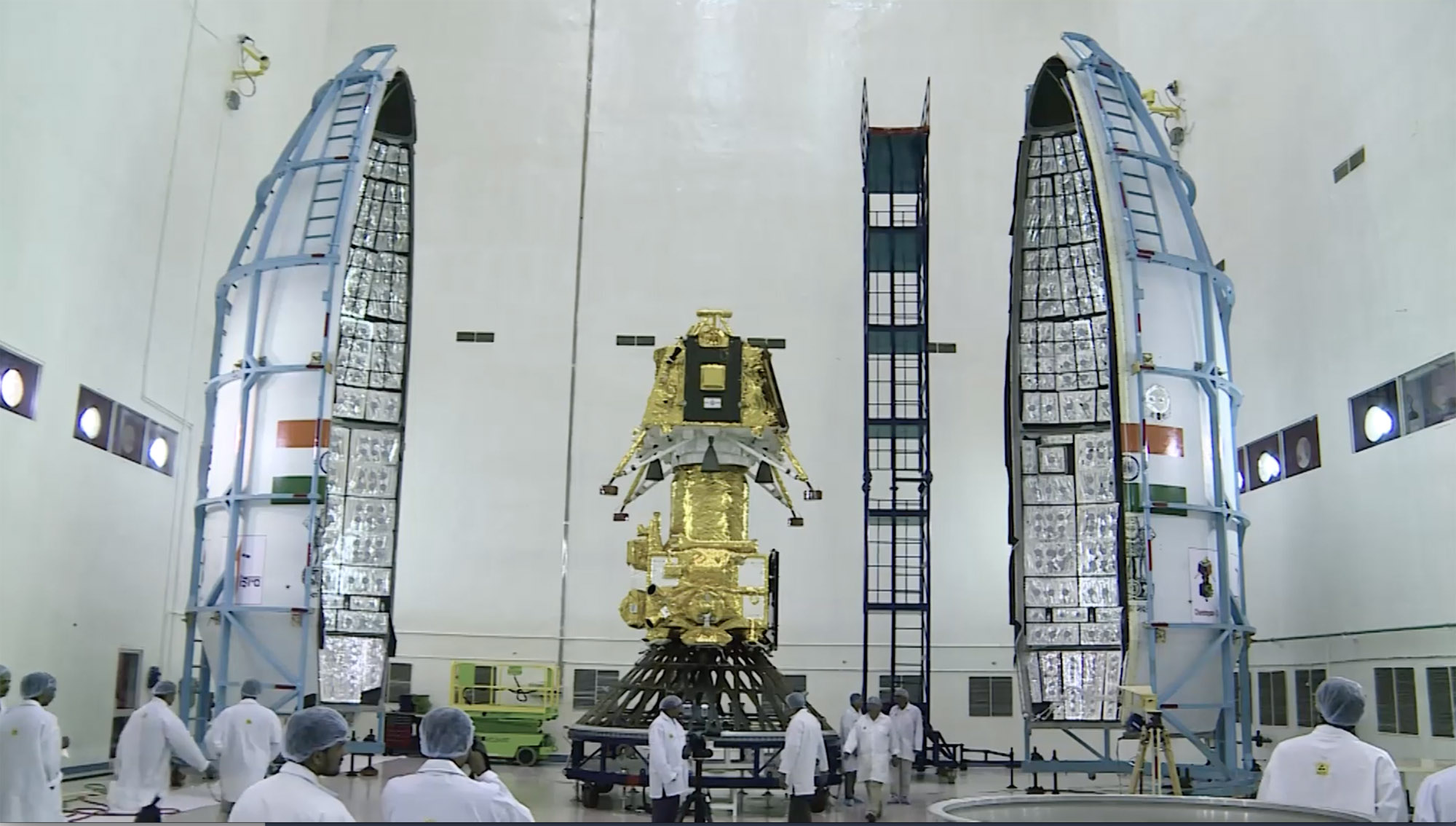India to Launch Chandrayaan-2 Moon Lander Mission July 22
India is now targeting a July 22 launch of its first moon lander and rover after a weeklong delay due to a technical glitch.
The Indian Space Research Organisation's (ISRO) Chandrayaan-2 moon mission will launch at 5:13 a.m. EDT (0913 GMT) on Monday from the agency's Satish Dhawan Space Center on the island of Sriharikota about 50 miles (80 kilometers) north of Chennai. The local time at liftoff will be 2:43 p.m. IST.
India initially tried to launch the Chandrayaan-2 mission Sunday (July 14) using its powerful Geosynchronous Satellite Launch Vehicle Mark III-M1 rocket, but they called off the attempt due to a "technical snag" an hour before liftoff. The glitch was reportedly related to a helium pressurization system on the rocket's cryogenic stage, according to Spaceflight Now.
Related: The Science of India's Chandrayaan-2 Moon Mission




ISRO officials convened a committee to investigate and fix the glitch, and that group has apparently wrapped up its work.
"The expert committee identified the root cause of the technical snag and all corrective actions are implemented," ISRO officials said in a status update. "Thereafter, the system performance is normal."
The $142 million Chandrayaan-2 mission is the successor to India's Chandrayaan-1 mission, which launched in 2008 and helped discover the presence of water molecules on the moon. But where Chandrayaan-1 was a single spacecraft, Chandrayaan-2 is made up of three vehicles: an orbiter, a lander called Vikram and a small rover called Pragyan.
Breaking space news, the latest updates on rocket launches, skywatching events and more!
If Chandrayaan-2 is successful, India will become the first country ever to land at the south pole of the moon, as well as the fourth country to soft-land a spacecraft on the lunar surface. Only NASA, Russia (as the former Soviet Union) and China have achieved the feat. A private Israeli spacecraft crashed into the moon during a failed landing attempt earlier this year in April.
According to its flight plan, Chandrayaan-2 will slowly make its way to the moon over several weeks, then release the Vikram lander to touch down near the south pole of the moon on Sept. 6. The Pragyan rover, tucked aboard Vikram, will then deploy and begin exploring the lunar south pole.
The Chandrayaan-2 orbiter is designed to spend about a year studying the moon from orbit, scanning for water ice in the shadowed regions of the lunar south pole. The solar-powered Vikram lander and Pragyan rover will spend about one lunar day (the equivalent of 14 Earth days) studying the moon's surface up close.
India's Chandrayaan-2 launch comes as NASA (and space fans around the world) celebrate the 50th anniversary of the Apollo 11 moon landing on July 20, 1969. A NASA laser retroreflector is riding aboard the Vikram lander as one of 13 science instruments on the Chandrayaan-2 mission.
- The 21 Most Marvelous Moon Missions of All Time
- How NASA Scrambled to Add Science Experiment to India's Moon Probe
- ISRO: The Indian Space Research Organization
Email Tariq Malik at tmalik@space.com or follow him @tariqjmalik. Follow us @Spacedotcom and Facebook.

Tariq is the award-winning Editor-in-Chief of Space.com and joined the team in 2001. He covers human spaceflight, as well as skywatching and entertainment. He became Space.com's Editor-in-Chief in 2019. Before joining Space.com, Tariq was a staff reporter for The Los Angeles Times covering education and city beats in La Habra, Fullerton and Huntington Beach. He's a recipient of the 2022 Harry Kolcum Award for excellence in space reporting and the 2025 Space Pioneer Award from the National Space Society. He is an Eagle Scout and Space Camp alum with journalism degrees from the USC and NYU. You can find Tariq at Space.com and as the co-host to the This Week In Space podcast on the TWiT network. To see his latest project, you can follow Tariq on Twitter @tariqjmalik.
